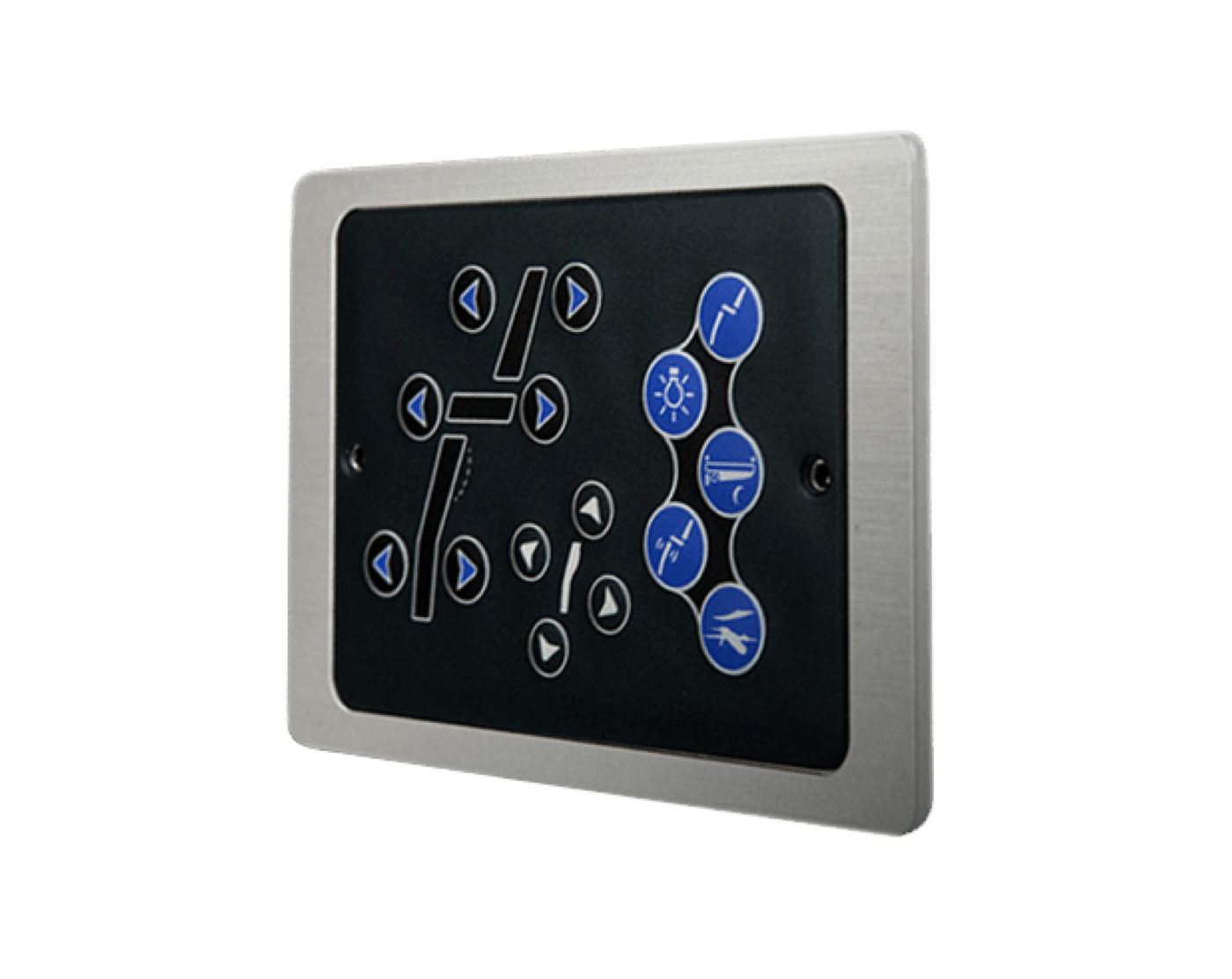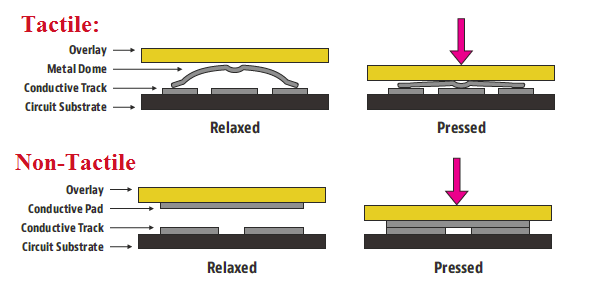Membrane Switches: A Cost-Effective Solution for Product Interfaces
Membrane Switches: A Cost-Effective Solution for Product Interfaces
Blog Article
Discover How Membrane Switches Function and Their Duty in Modern Electronic Devices
Membrane Switches represent a sophisticated integration of technology and design within the realm of modern-day electronics, functioning as essential user interfaces in many gadgets. Included several layers, these switches utilize pressure-sensitive mechanisms to promote user communication. Their applications extend various sectors, from consumer electronic devices to medical equipment, highlighting their convenience and value. Recognizing the ins and outs of Membrane button functionality and their more comprehensive effects in enhancing customer experience invites further expedition into their design, benefits, and the innovative advancements shaping their future in technology.
What Are Membrane Buttons?

Membrane switches are differentiated by their durability and resistance to environmental factors, such as dust, moisture, and extreme temperatures. They can be personalized with various graphics, colors, and tactile comments alternatives, boosting customer experience while keeping aesthetic appeal - membrane switches. The unification of printed circuits allows for smooth integration right into tools, boosting overall functionality.
The flexibility of Membrane buttons appears in their capability to sustain both intricate and straightforward control functions. They can incorporate features such as LED indicators and touch-sensitive modern technology, satisfying specific individual requirements. As modern technology proceeds to evolve, Membrane Switches stay important for enabling intuitive and effective interface, thereby playing a pivotal duty in the advancement of contemporary digital devices.
Components of Membrane Buttons
Membrane buttons are composed of several essential components that function together to develop a functional and reliable interface. The primary components consist of the visuals overlay, glue layer, spacer layer, and conductive traces.
The graphic overlay functions as the interface, usually printed on an adaptable substratum such as polyester or polycarbonate. This layer not only supplies aesthetic charm yet likewise consists of tactile responses, aesthetic hints, and safety functions. Below the visuals overlay exists the sticky layer, which protects the switch to the device and makes certain sturdiness versus ecological tensions.
The spacer layer is vital for maintaining the necessary void between the visuals overlay and the circuit layer. When pressure is applied, this gap enables for the activation of the button. The conductive traces, typically made from silver or carbon, create the electric pathways that finish the circuit when the button is engaged.
Furthermore, a support layer may be included for architectural assistance and insulation. These elements collaborate seamlessly, making certain that Membrane switches are both user-friendly and durable, making them vital in numerous modern electronic applications.
Exactly How Membrane Switches Work
Exactly how do Membrane Switches feature successfully within digital devices? Membrane Switches operate on the principles of pressure-sensitive innovation, making use of a layered construction that consists of graphic overlays, adhesive layers, and conductive aspects.
The layout of Membrane buttons is essential for their effective procedure (membrane switches). The layers are meticulously crafted to give tactile comments, durability, and resistance to environmental elements such as wetness and dirt. The inclusion of domes-- find this little, raised locations within the button-- improves responsive feedback, offering users with a noticeable click feeling upon activation
Additionally, Membrane switches can be customized in terms of dimension, shape, and graphics, making them ideal for different applications. They are often made use of in control panels, clinical gadgets, and customer electronics as a result of their streamlined design and dependability. Generally, the efficient performance of Membrane switches is critical in boosting user communication and guaranteeing seamless procedure in modern-day digital tools.

Applications in Modern Devices
Using their special design and capability, Membrane switches have actually become indispensable elements in a wide variety of contemporary electronic tools. These versatile interfaces are used in customer electronic devices, industrial equipment, medical devices, and auto controls, giving seamless user interaction.
In customer electronic devices, Membrane buttons are commonly found in devices like microwaves, washing machines, and other house tools, where they make it possible for intuitive control with a streamlined account. Their inconspicuous design assists in more combination right into small devices, improving aesthetic allure without compromising capability.
In industrial applications, Membrane Switches function as control board for equipment, providing durability and resistance to harsh environments. Their capacity to stand up to wetness and impurities makes them excellent for usage in manufacturing and processing industries.
Clinical tools likewise take advantage of Membrane switches, which are created to be very easy to clean and maintain, making certain health in medical setups. They are typically made use of in diagnostic equipment, individual surveillance systems, and mobile medical gadgets, where reliability is vital.
Advantages of Membrane Buttons
One of the key benefits of Membrane switches is their flexibility, which enables them to be tailored for a variety of applications across several industries. These buttons can be developed in various sizes check my site and shapes, suiting special product needs while giving seamless combination into tools. Their thin account makes it possible for a portable and streamlined layout, commonly improving the visual appeal of digital products.
Another considerable advantage is their longevity - membrane switches. Membrane buttons are generally immune to dirt, wetness, and chemicals, making them excellent for extreme settings. This strength extends their lifespan compared to typical mechanical buttons, lowering the requirement for frequent substitutes
In addition, Membrane Switches offer cost-effectiveness. The production procedure entails printing innovations that minimize manufacturing costs, specifically for huge runs. This affordability, incorporated with reduced maintenance requirements, makes them an appealing alternative for producers.

Final Thought
In conclusion, Membrane Switches stand for a significant innovation in user interface modern technology within modern-day electronics. As the demand for instinctive and durable interfaces proceeds to expand, the duty of Membrane buttons in shaping customer experience will unquestionably increase.
Membrane Switches represent an advanced integration of technology and design within the world of contemporary electronics, serving as essential interfaces in various gadgets.In the realm of contemporary electronic devices, Membrane Switches serve as crucial parts that assist in user communication with devices. As innovation continues to advance, Membrane Switches continue to be crucial for allowing reliable and user-friendly customer interfaces, therefore playing a pivotal duty in the development of contemporary digital devices.
How do Membrane Switches feature efficiently within electronic tools? Generally, the effective performance of Membrane switches is crucial in enhancing customer communication and making sure seamless procedure in modern digital tools.
Report this page